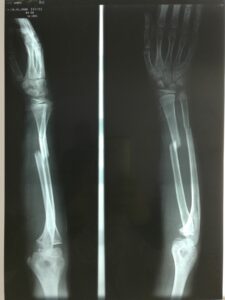
Recognizing groups at risk for broken bones is critical for implementing prevention measures and avoiding accidents that can reduce quality of life. In the case of certain breaks – such as hip fractures – even premature death can occur. Currently, those with intellectual disability (also referred to as learning disabilities) are not identified as a group at heightened risk for fractures. However, a recent analysis at the University of Oxford suggests that they should be. Their study is published in eClinical Medicine, part of The Lancet Discovery Science.
The scientists evaluated data from the UK Clinical Practice Research Datalink from 1998 to 2017. They used the data to compare the incidence of fractures in 43,176 people with intellectual disabilities to that of 215,733 people without these disabilities. The median age of study participants was 24.
Researchers found that hip fractures tended to occur at much younger ages in those with intellectual disabilities. For instance, 45-year-old men with intellectual disabilities suffered similar rates of hip fractures as 70-year-old men without intellectual disabilities. Similarly, women with and without intellectual disabilities had comparable rates of hip fractures at ages 45 and 60, respectively.
Given the significant age difference in hip fracture rates in those with and without disabilities and the devastating consequences of hip fractures, the authors argue that those with intellectual disabilities urgently require prevention and management strategies. More research is needed to determine the precise reasons for the increased risk of hip fractures in those with intellectual disabilities. More knowledge on this front should help physicians in the development of evidence-based programs to reduce the incidence of hip fractures in this vulnerable population.
Reference
Frighi V, Smith M, Andrews TM, et al. Incidence of fractures in people with intellectual disabilities over the life course: a retrospective matched cohort study. EClinicalMedicine. 2022;0(0):101656. doi:10.1016/J.ECLINM.2022.101656
